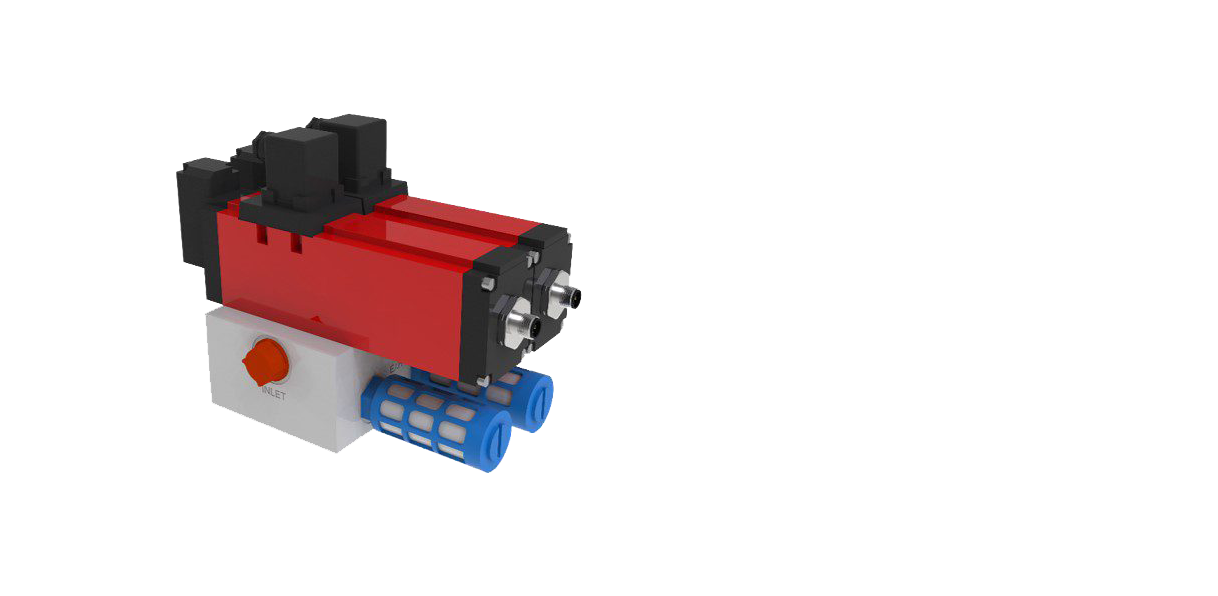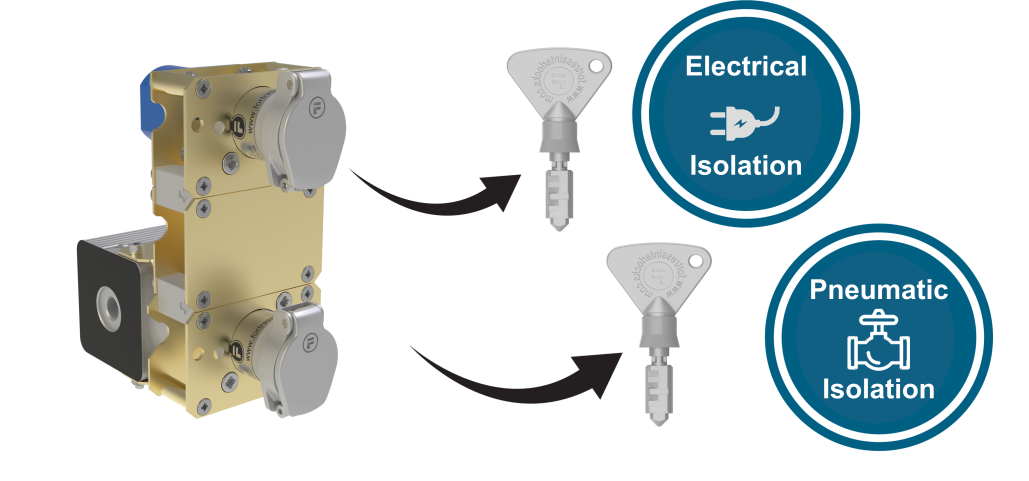
The Pneumatic Trapped Key Valve for Isolation
The PV or Pneumatic Valve unit is a trapped key valve for pneumatic isolation. Conventional set up operates as key removed, pneumatic power source isolated, with residual pressure (downstream) exhausted.
Example Part Number | PV-CLIS-34 (3/4″ Pneumatic Valve with Lock Operated Isolation and Dust Cover Protection)
The Pneumatic valve can be used to exchange one or more keys for a number of other keys, when used in conjunction with other modules. These keys can be release for accessing an entry point to a safeguarded space as shown in the image below.
Whilst the isolation key is inserted into the access interlock and the door remains open, the key cannot be removed to restore hazardous pneumatic energy.
Multiple Sources of Isolation
The range of pneumatic trapped key elements makes designing a solution highly flexible. In this example, the solution combines both electrical and pneumatic isolation via a cam operated sequence, ensuring both keys are removed for access to be possible.
Example Part Number | PSPEPV-CLSS-A02022-12 (1/2″ Pneumatic Valve with Lock Operated Isolation and Dust Cover Protection, and 20A 2NO, 2NC lock operated switch)
Integrated Control Systems with Pneumatic Trapped Key Isolation
“Are you looking for an all-in-one safety solution for multiple energy source isolation?”
The Pneumatic Trapped Key Isolation Range allows configuration of valves, trapped key interlocks and switches with multiple combinations of isolation and access keys possible. Operation of these devices can be both sequential and non-sequential.
SS – Solenoid Key Switch Module for controlled run-down

PS
Lock Operated Switch for Electrical Isolation
PE
Blank Module (for spacing between PS, PV, and PH modules)
PV
Lock Operated Pneumatic Valve for Pneumatic Isolation
PL
Lock Operated Module
PH
Handle Operated Pneumatic Valve for Pneumatic Isolation
Example Part Number | PSPEPVPLPH-CLIS-A02022-12-12
When designing a PV system, electrical isolation should occur prior to fluid power isolation.
PV systems are always cam operated from the top most position moving downwards in a fully sequential sequence. Normally Out Locks (no key present when hazardous electrical or pneumatic power is live) are positioned at the top of the sequence and are operated first.
Valve Isolation with Trapped Key Release for Access
In this application, isolation of the valve enables access to three door interlocks via the release of three keys.
In (1.) the black handle is rotated to isolate the pneumatic energy. This rotates a cam behind the black lever which in turn frees three keys in order from the three locks (2.). In (3.), the keys are taken to three access points to enter a safeguarded space. Whilst these keys are trapped in the access points, the pneumatic energy cannot be returned to the system.

Example Part Number | PVPLPLPL-CLSS-12
See all downloads and technical information on the trapped key page or on the main downloads page.
Downloads and Technical Info
See all downloads and technical information on the trapped key page or on the main downloads page.




